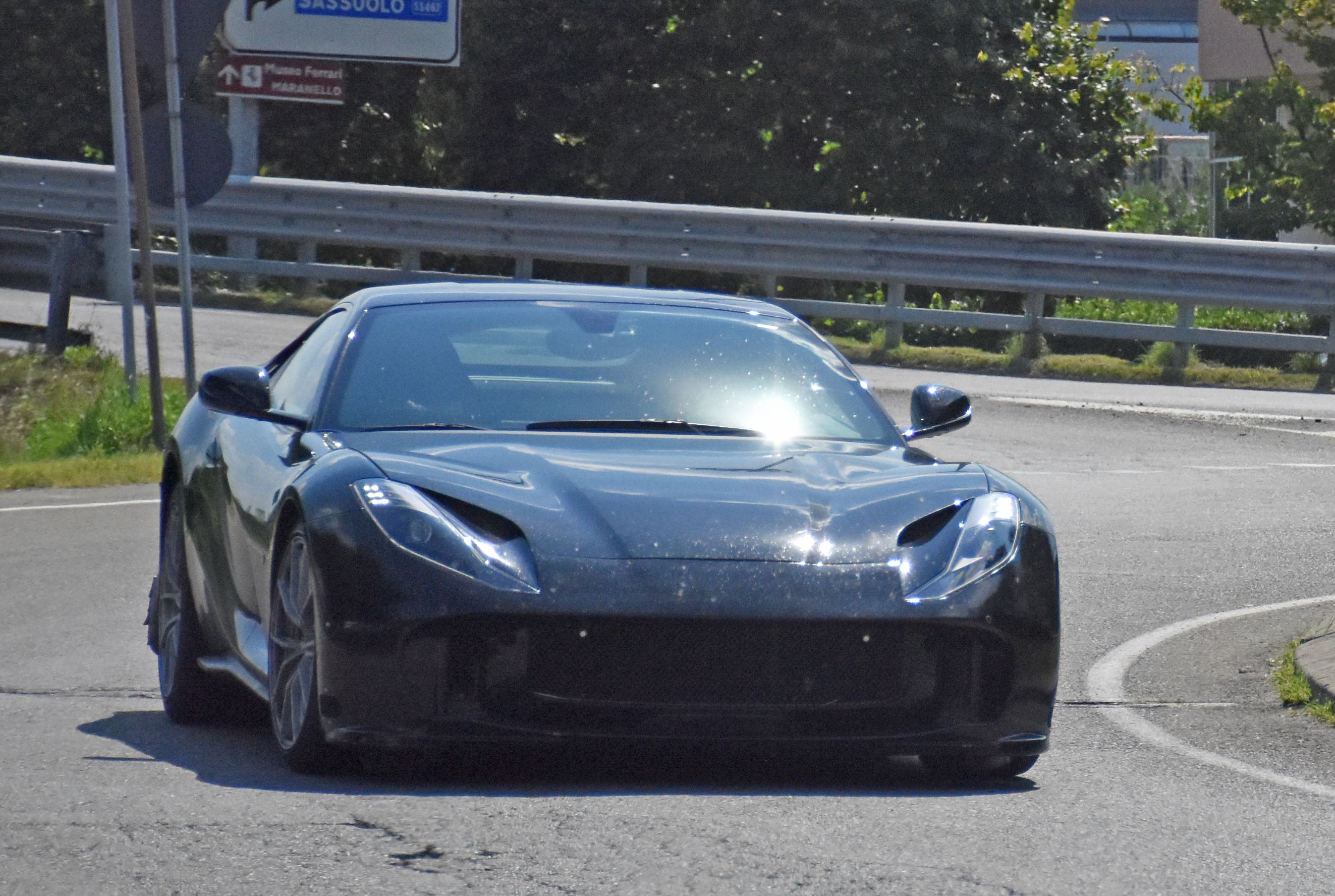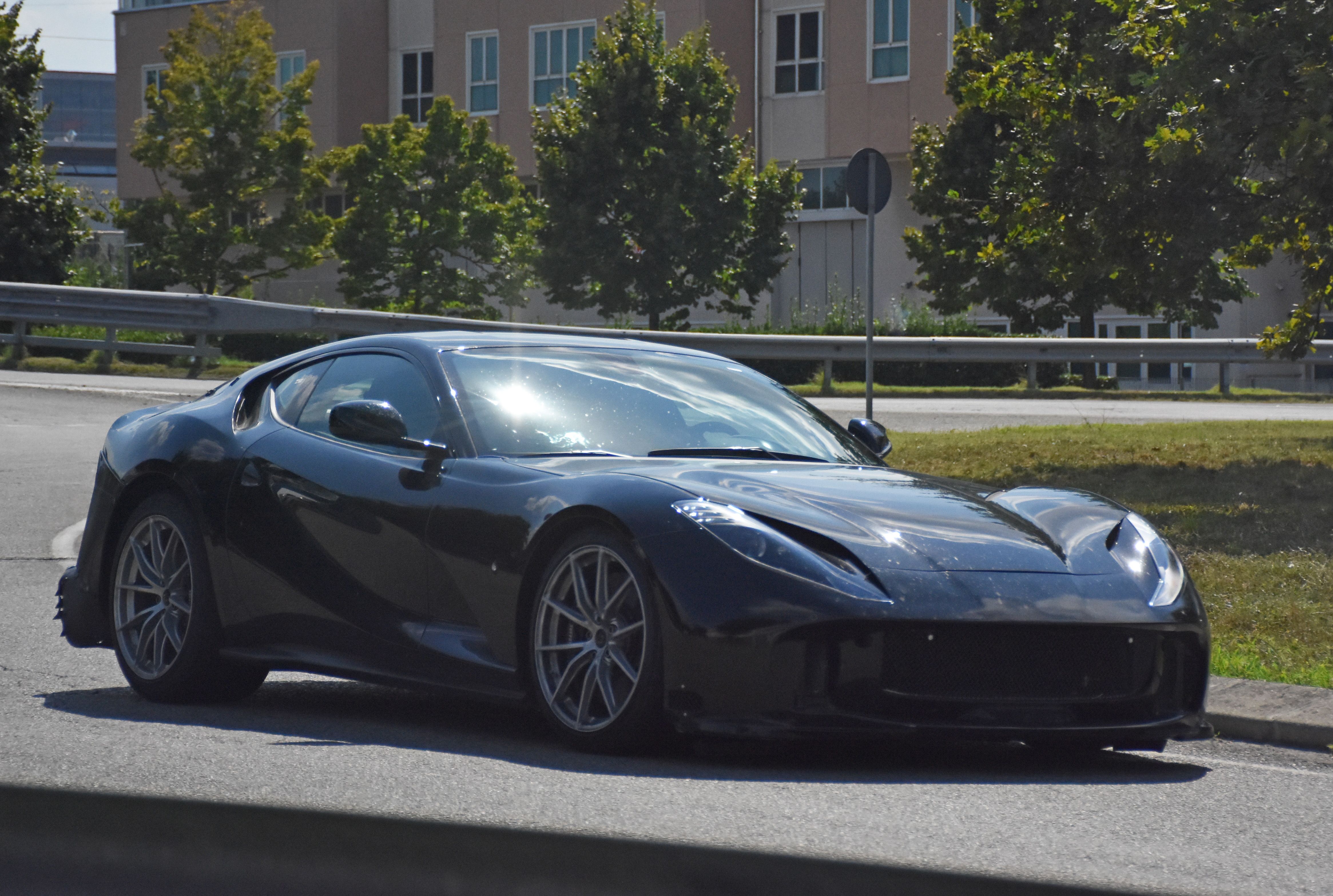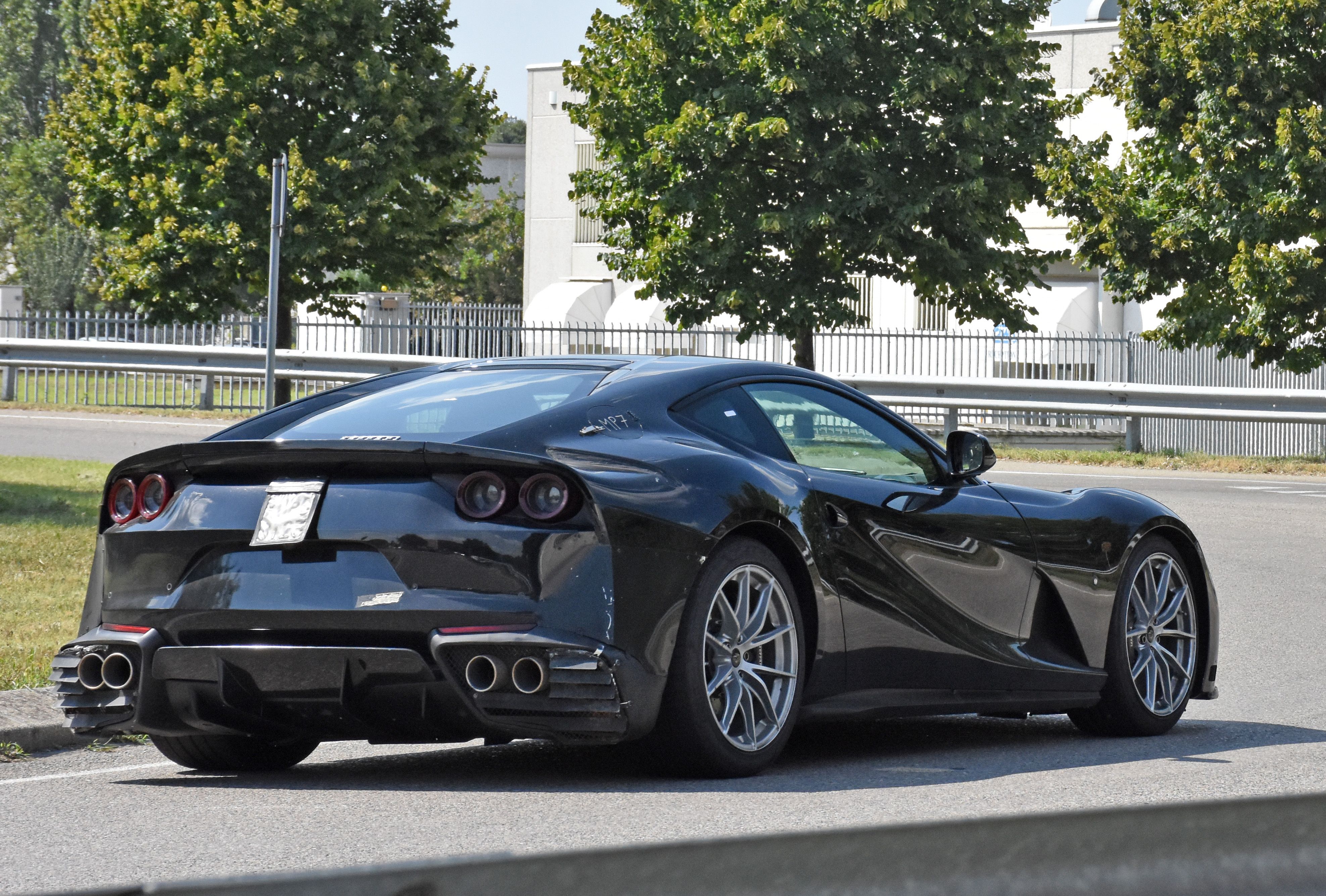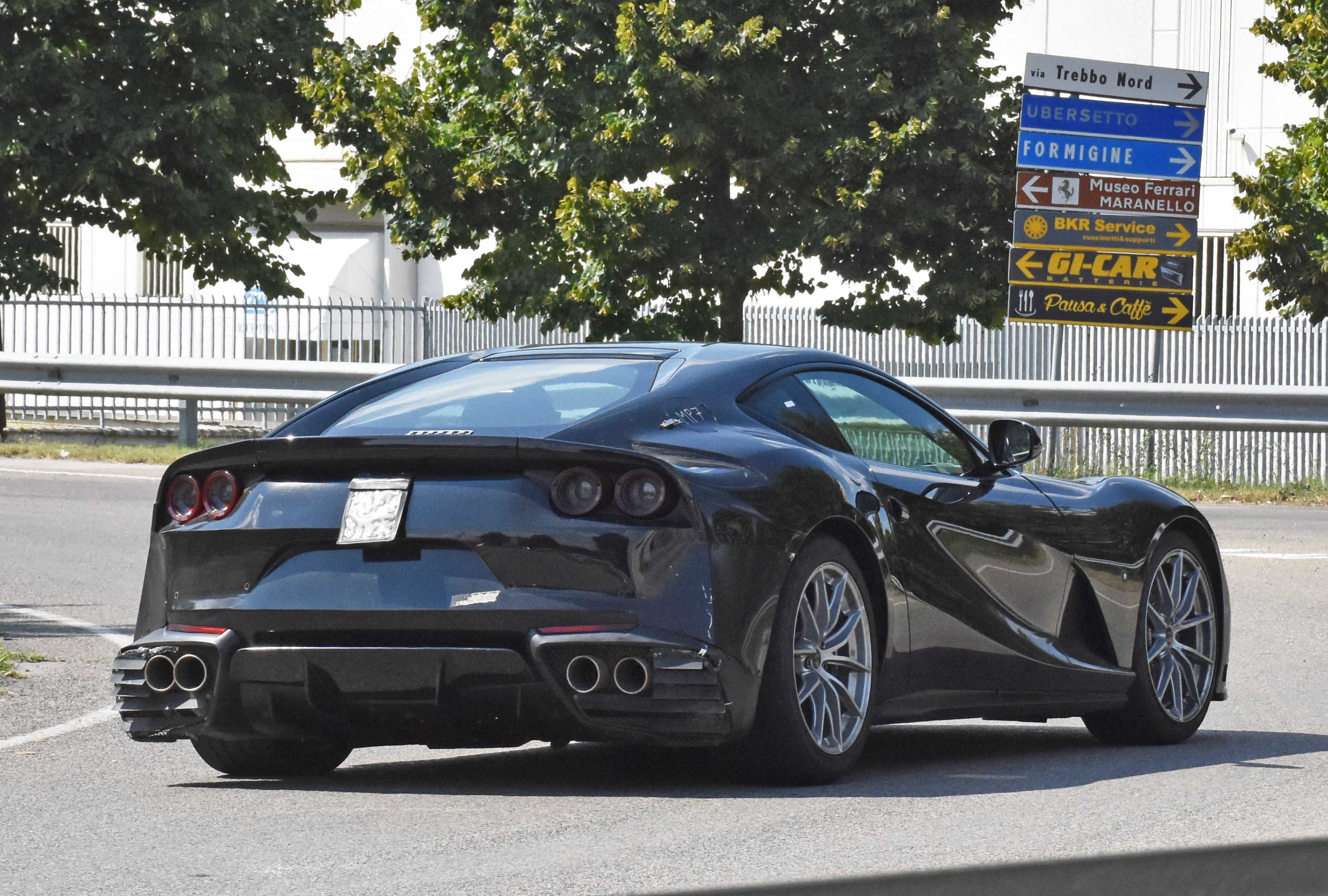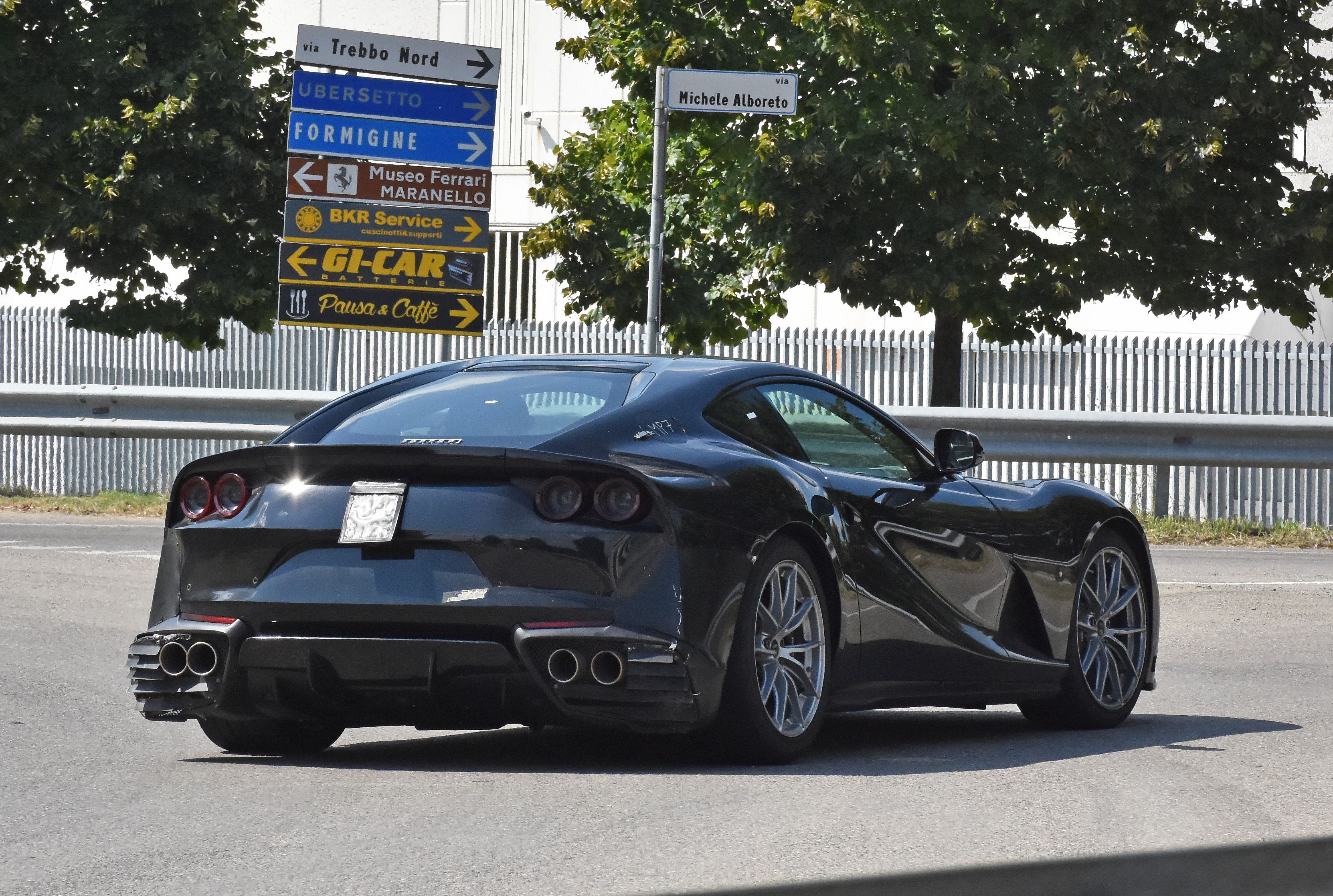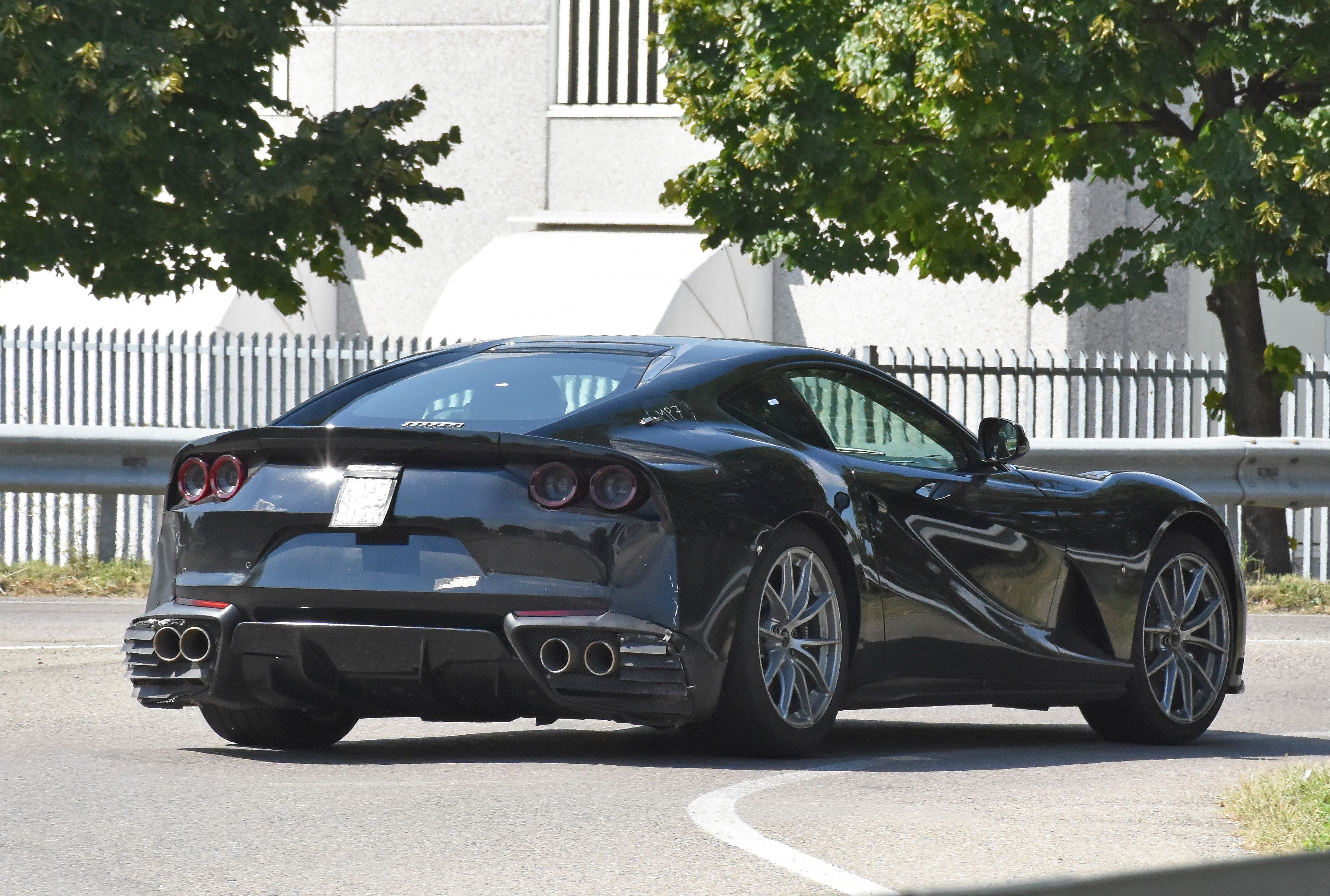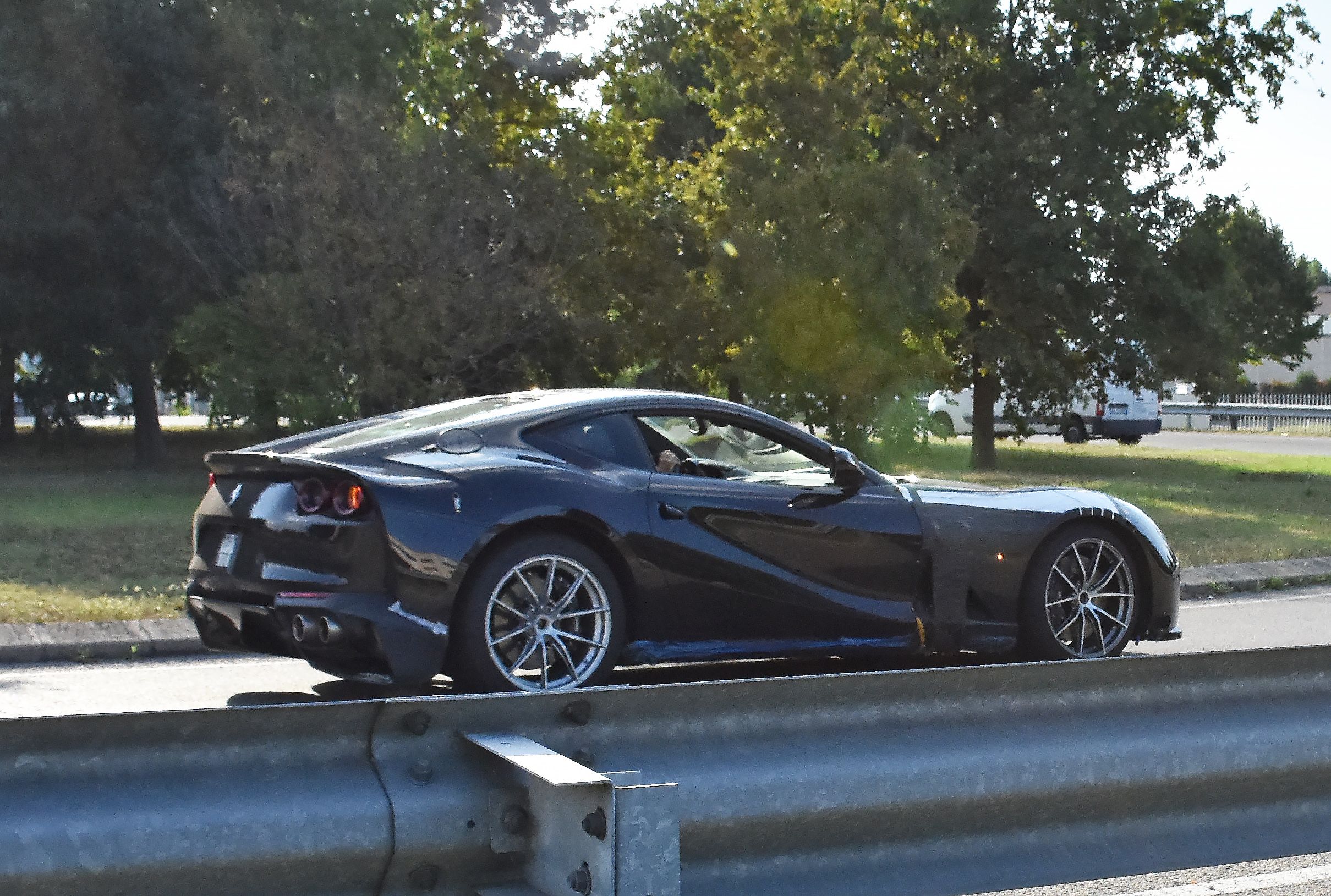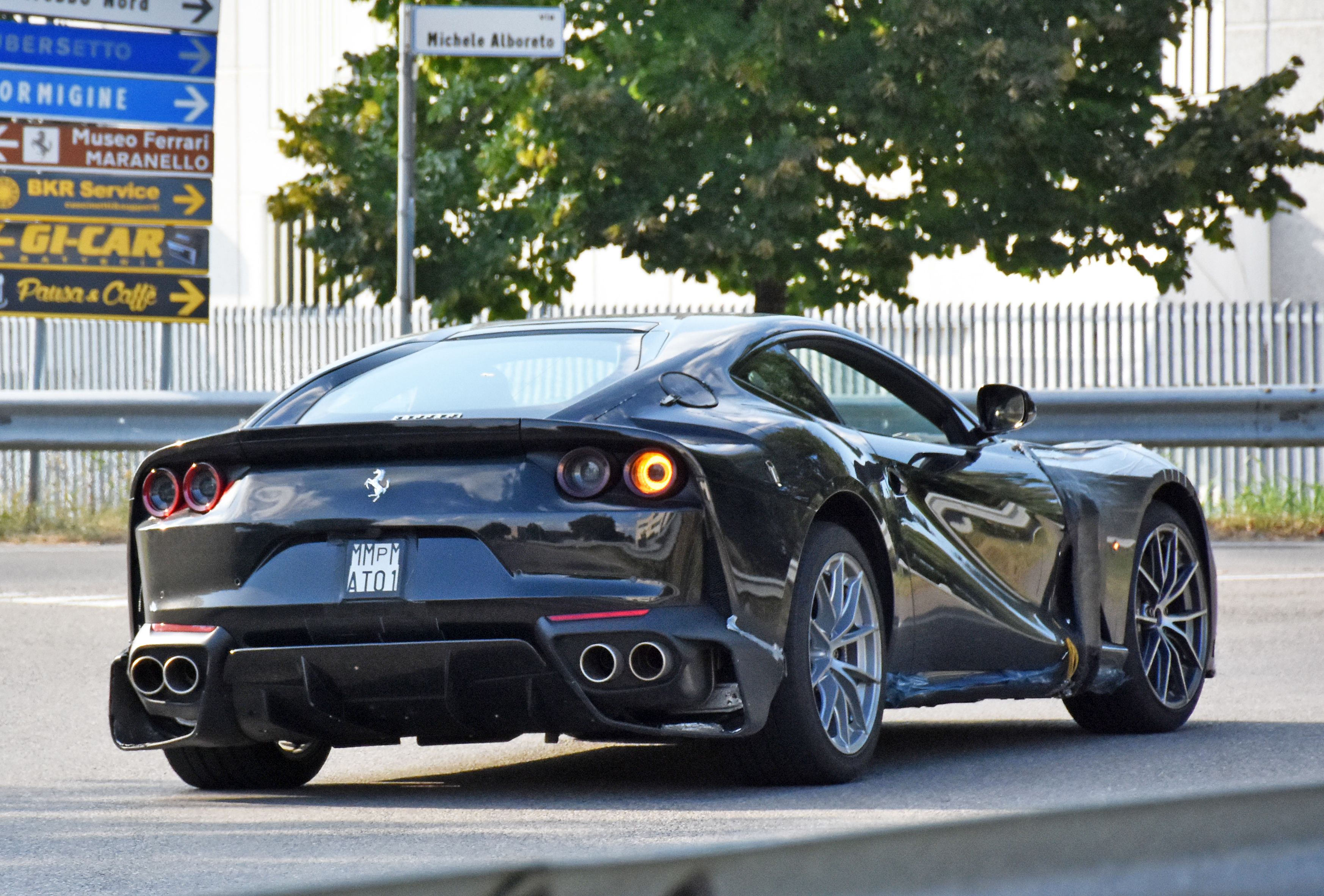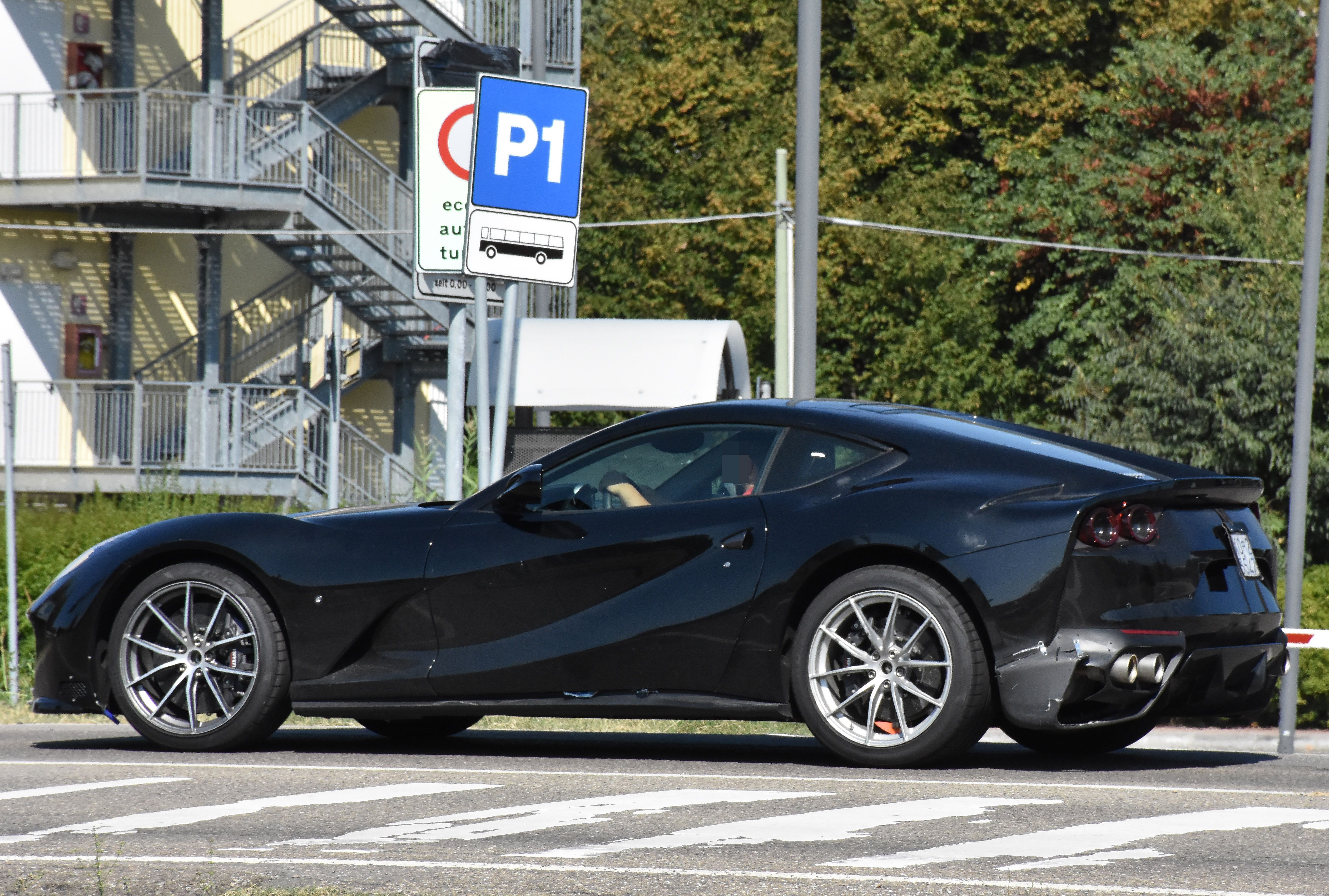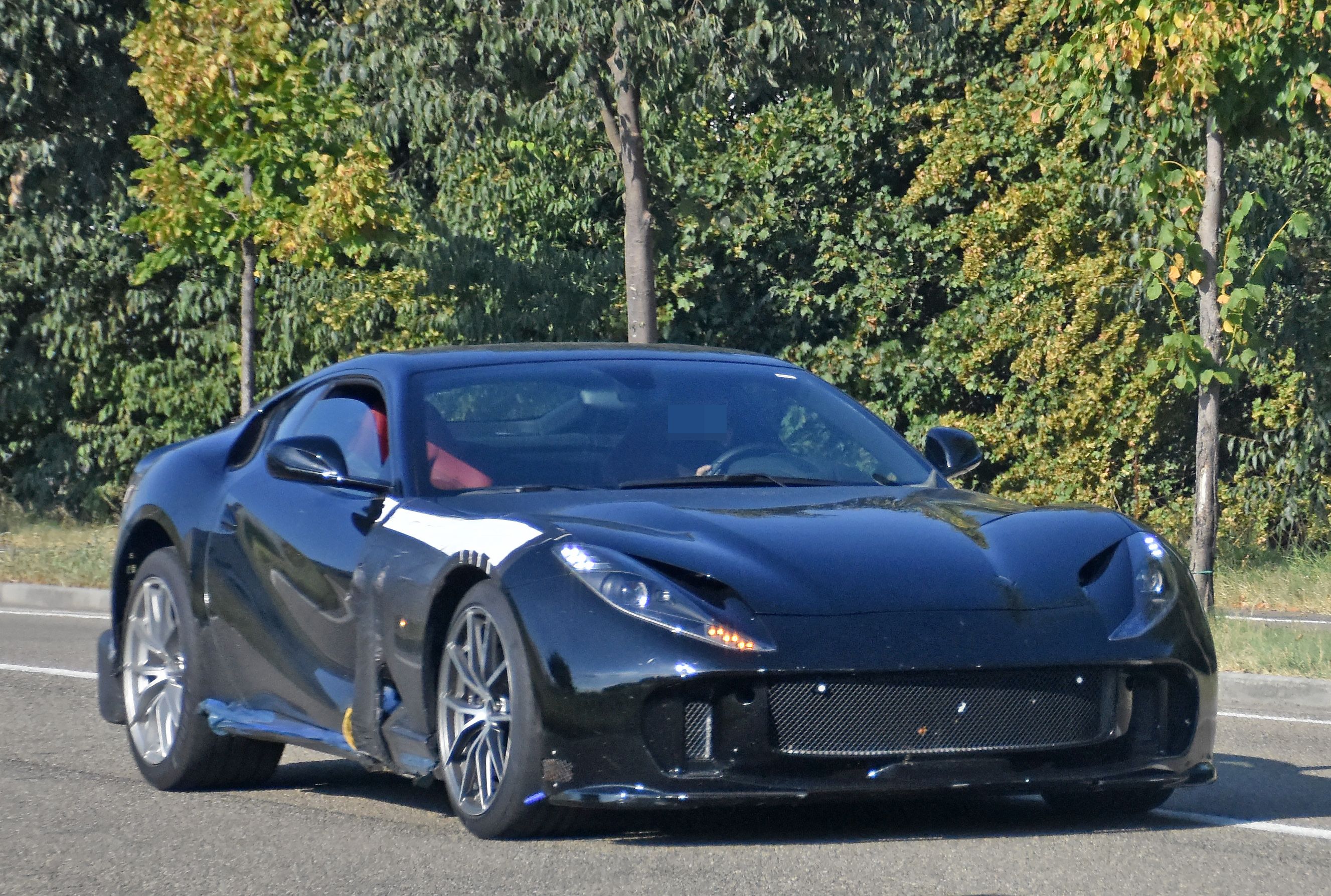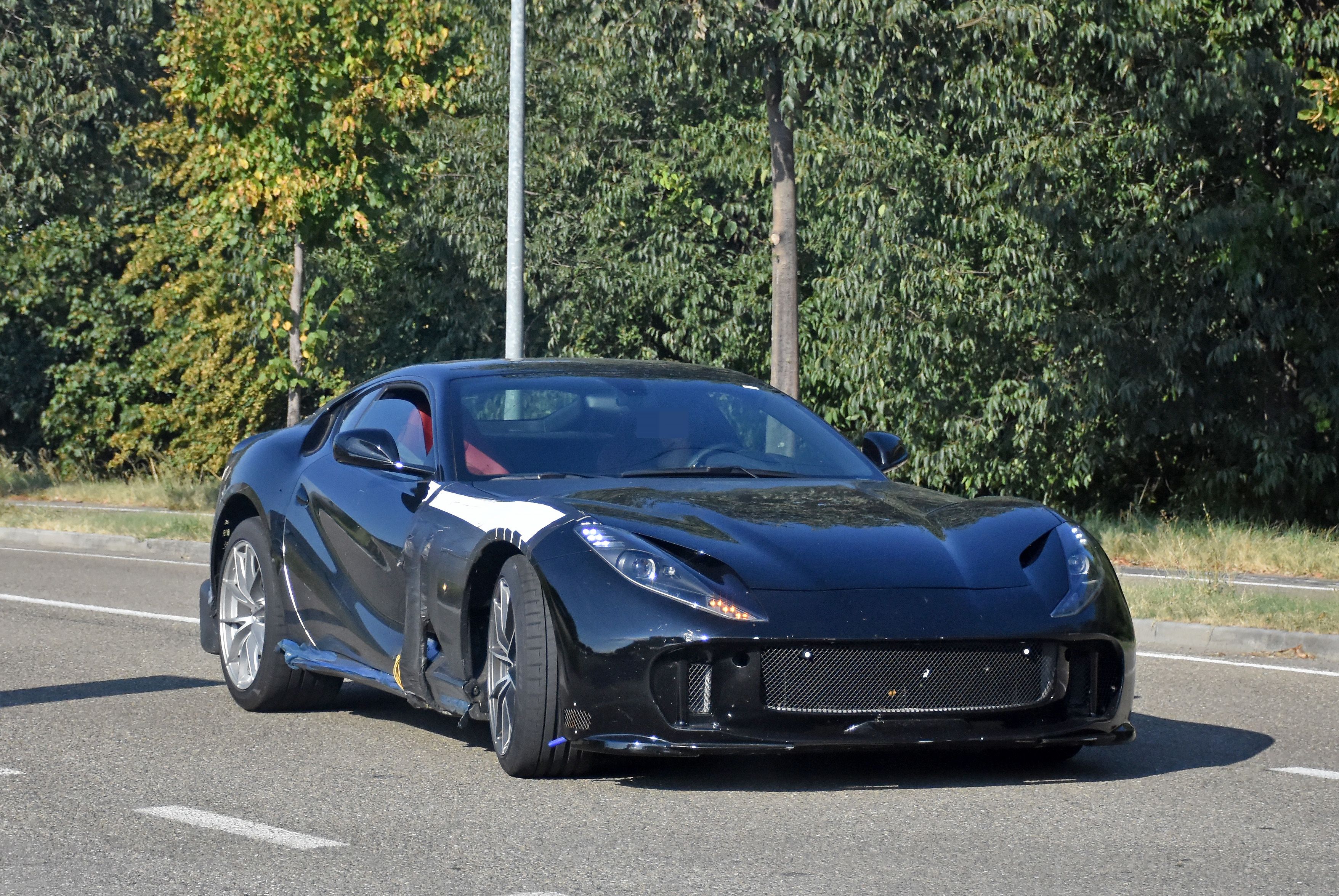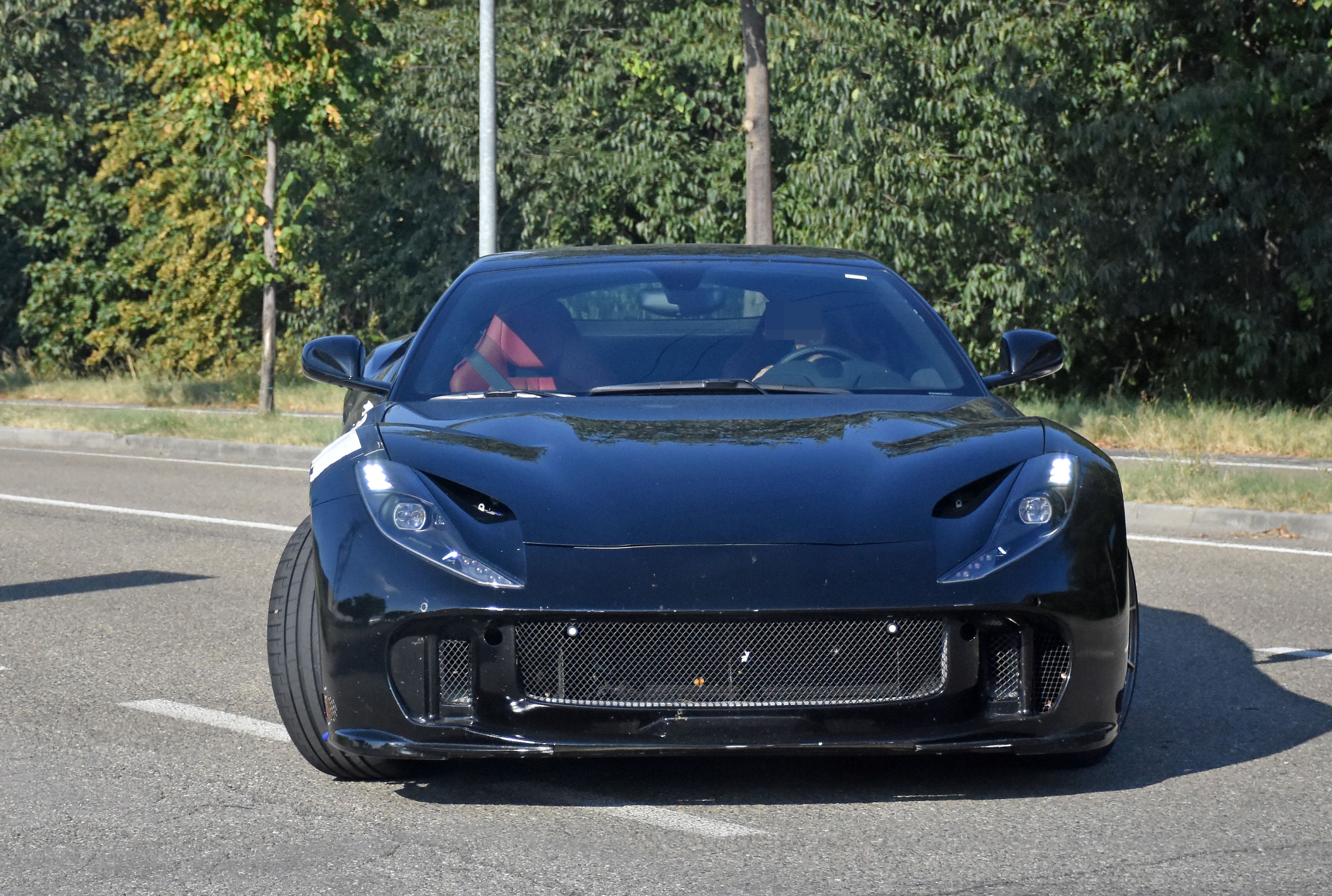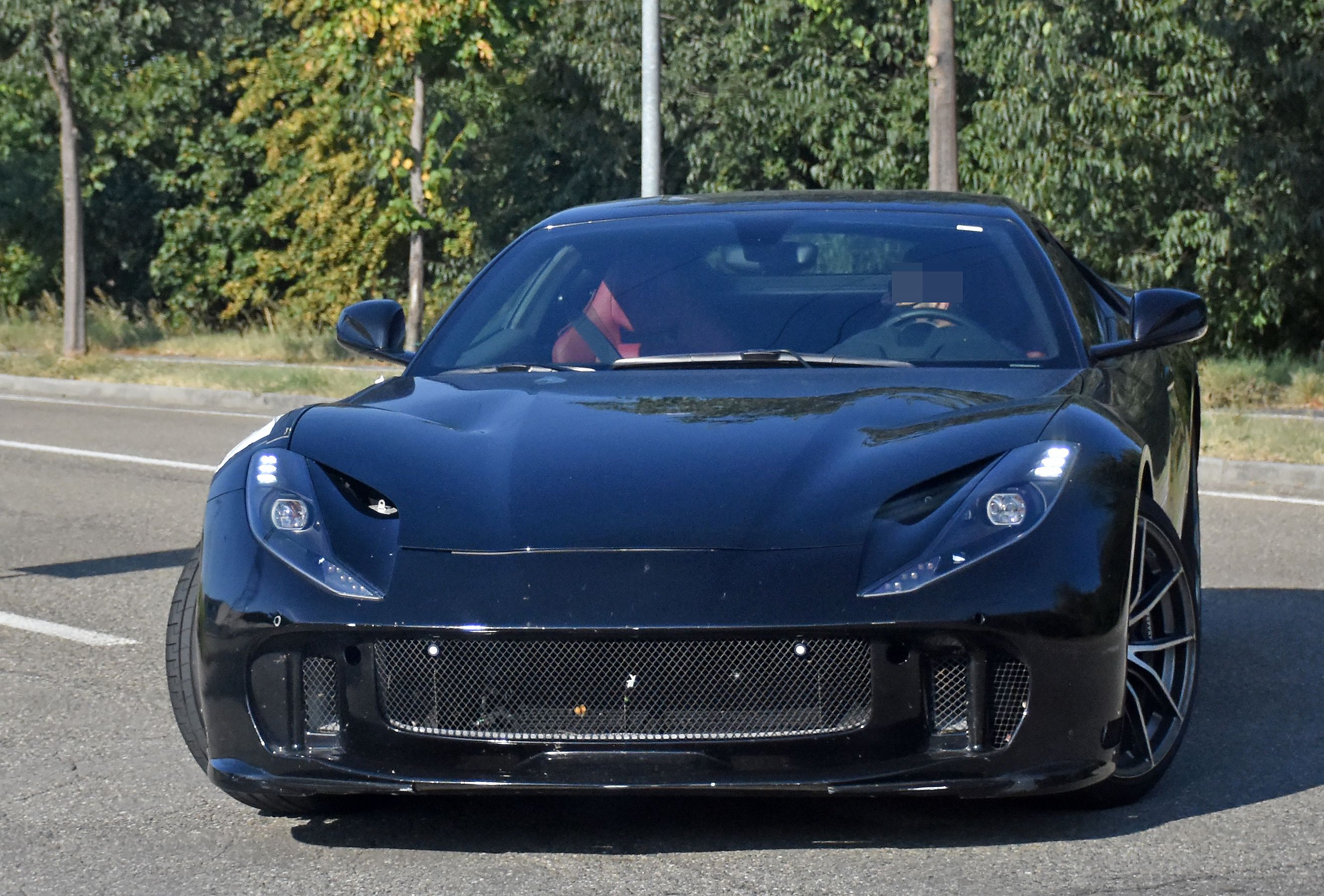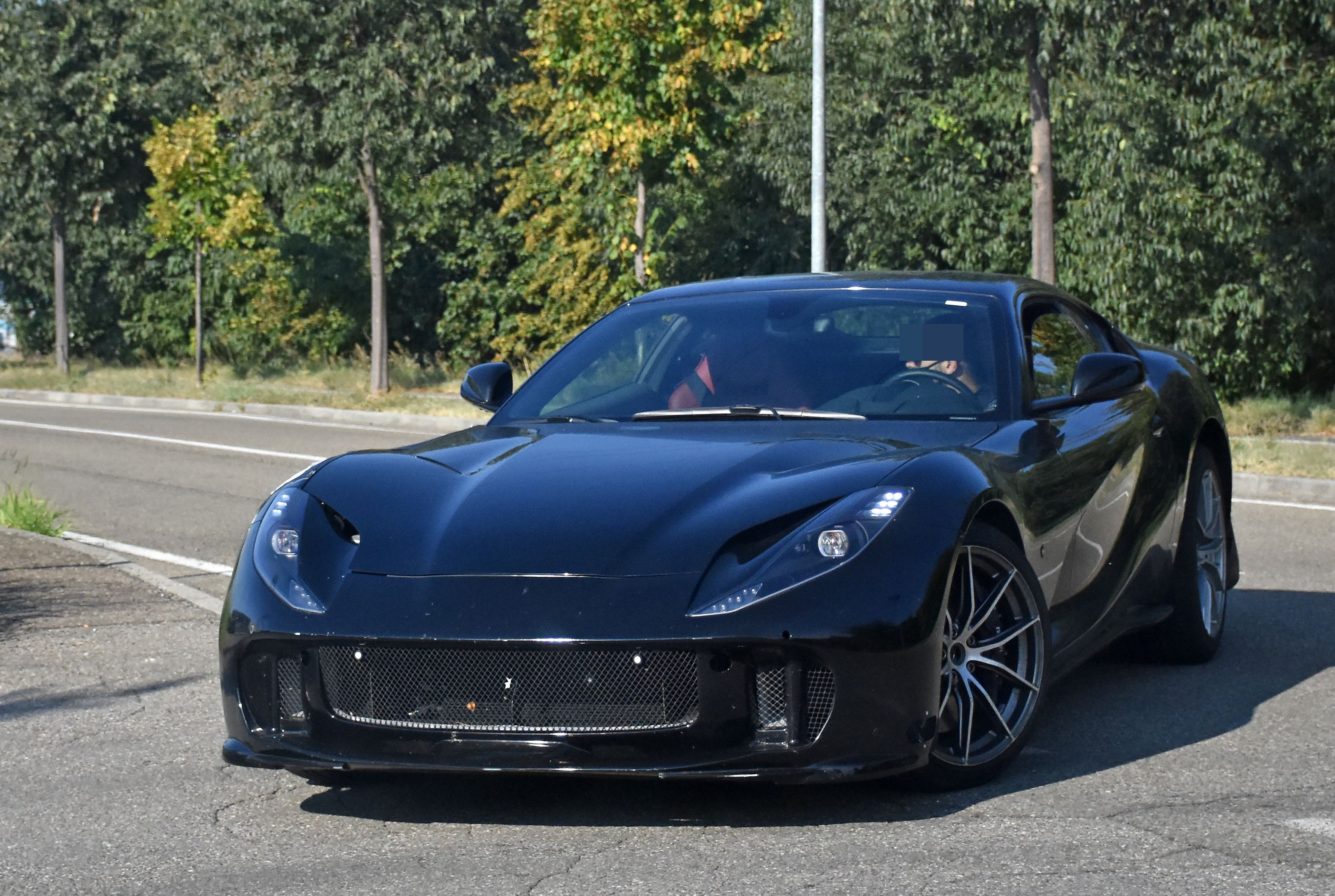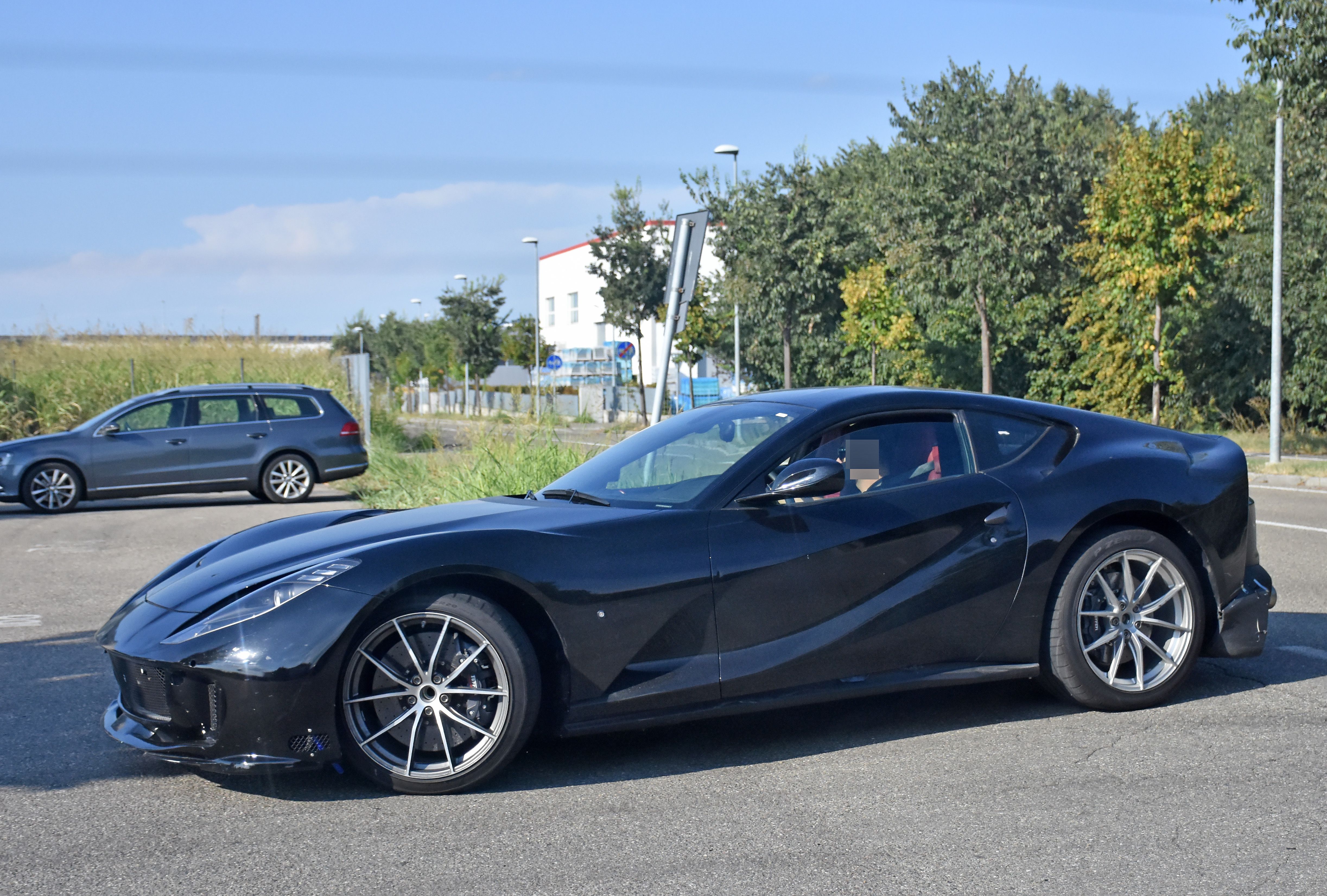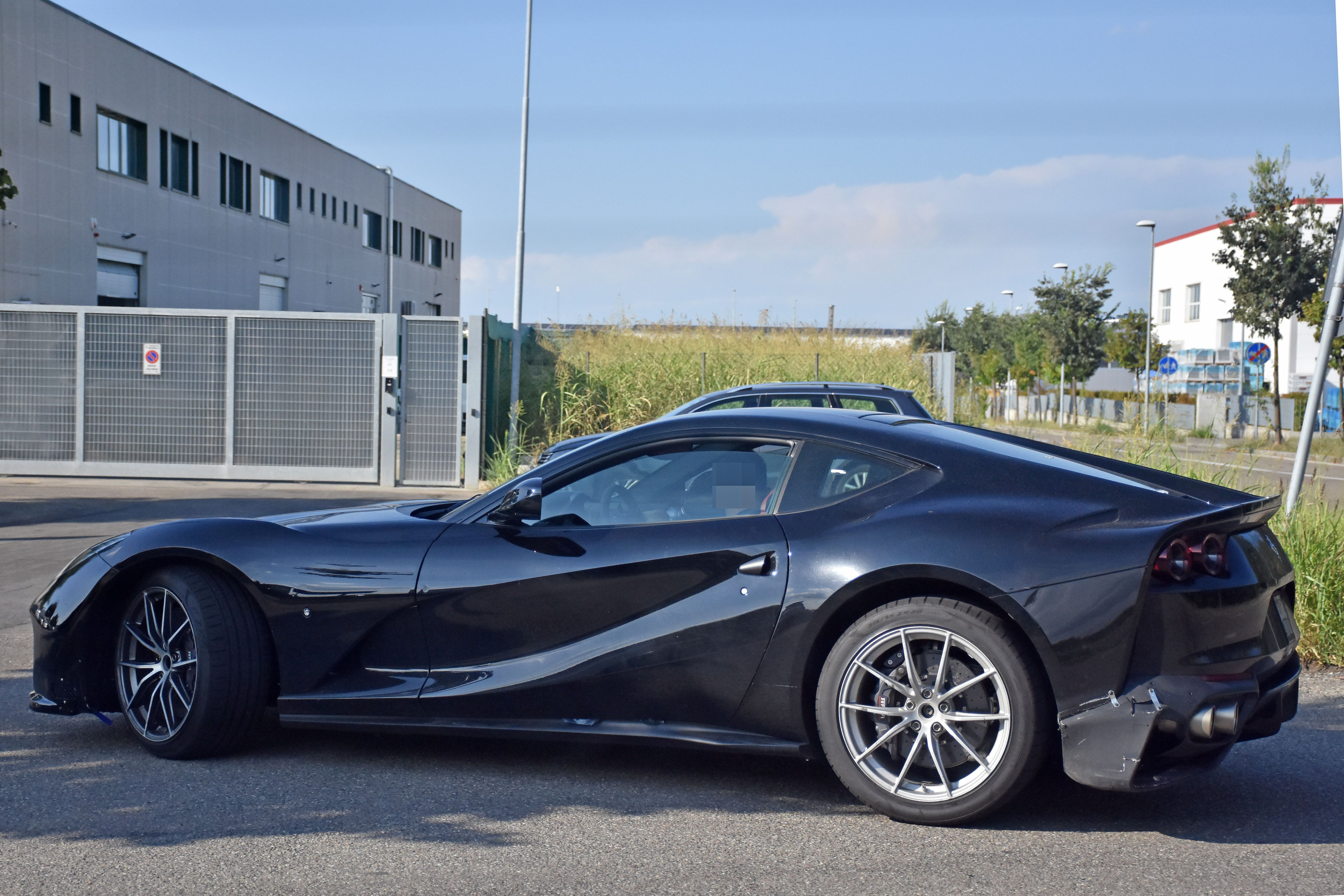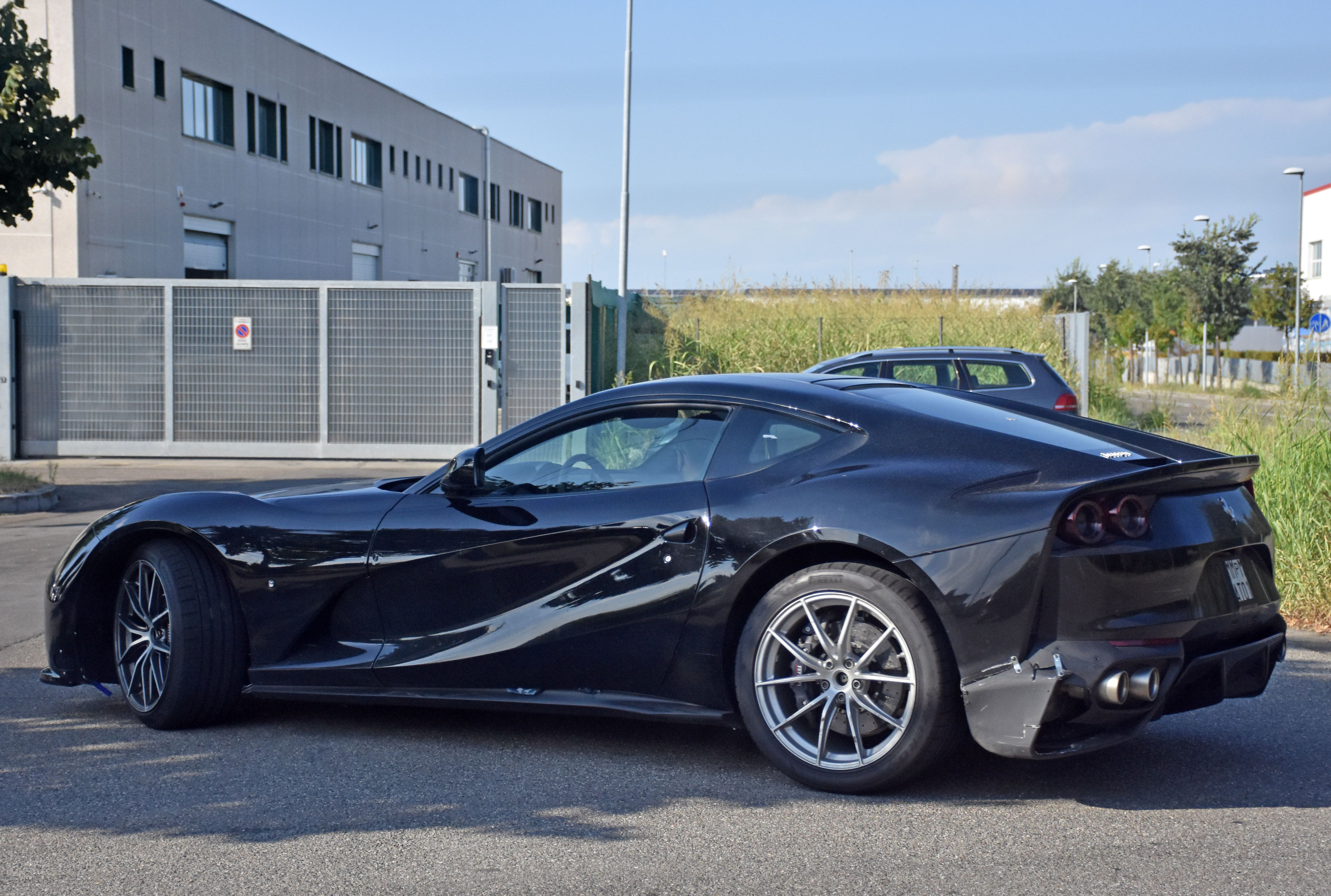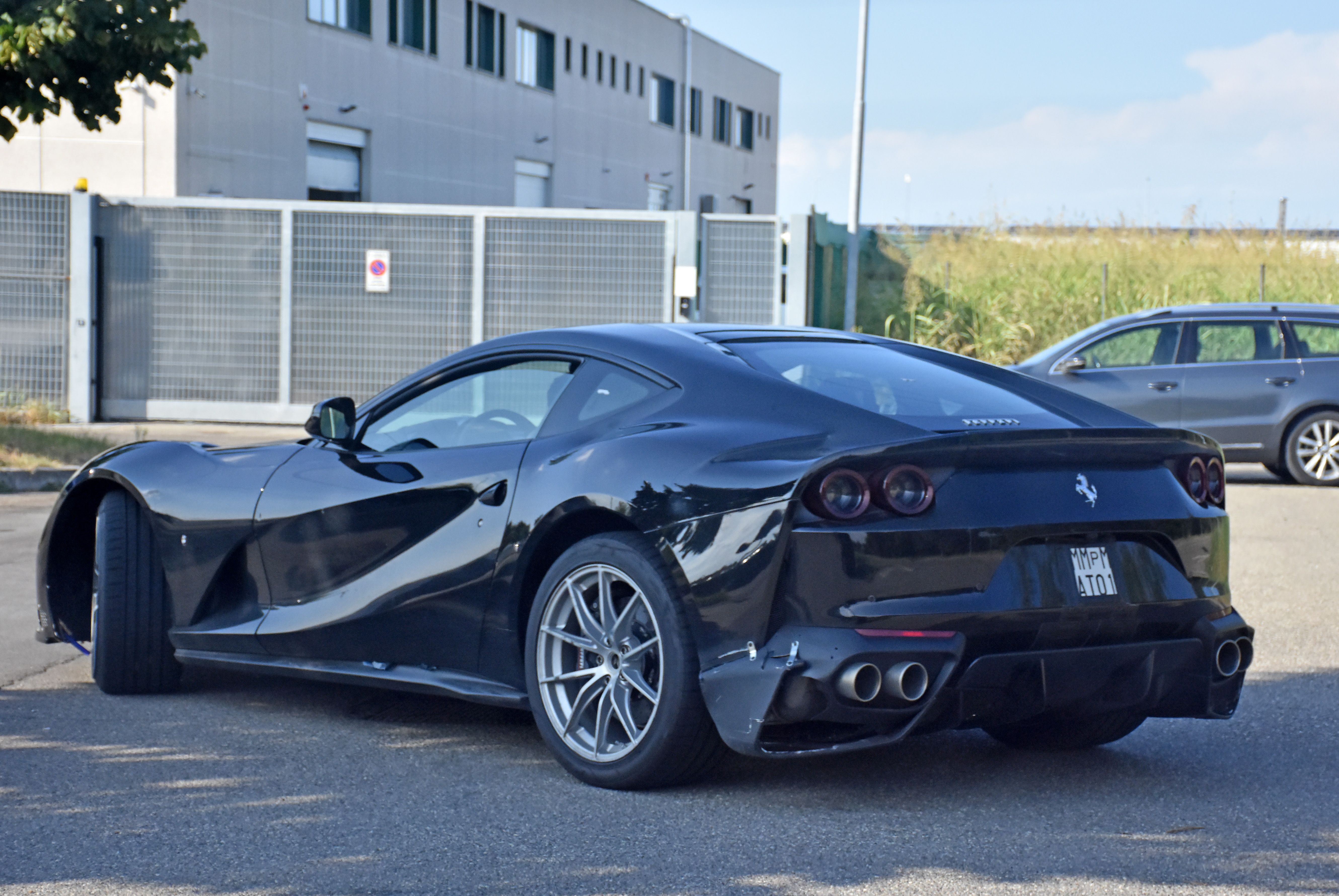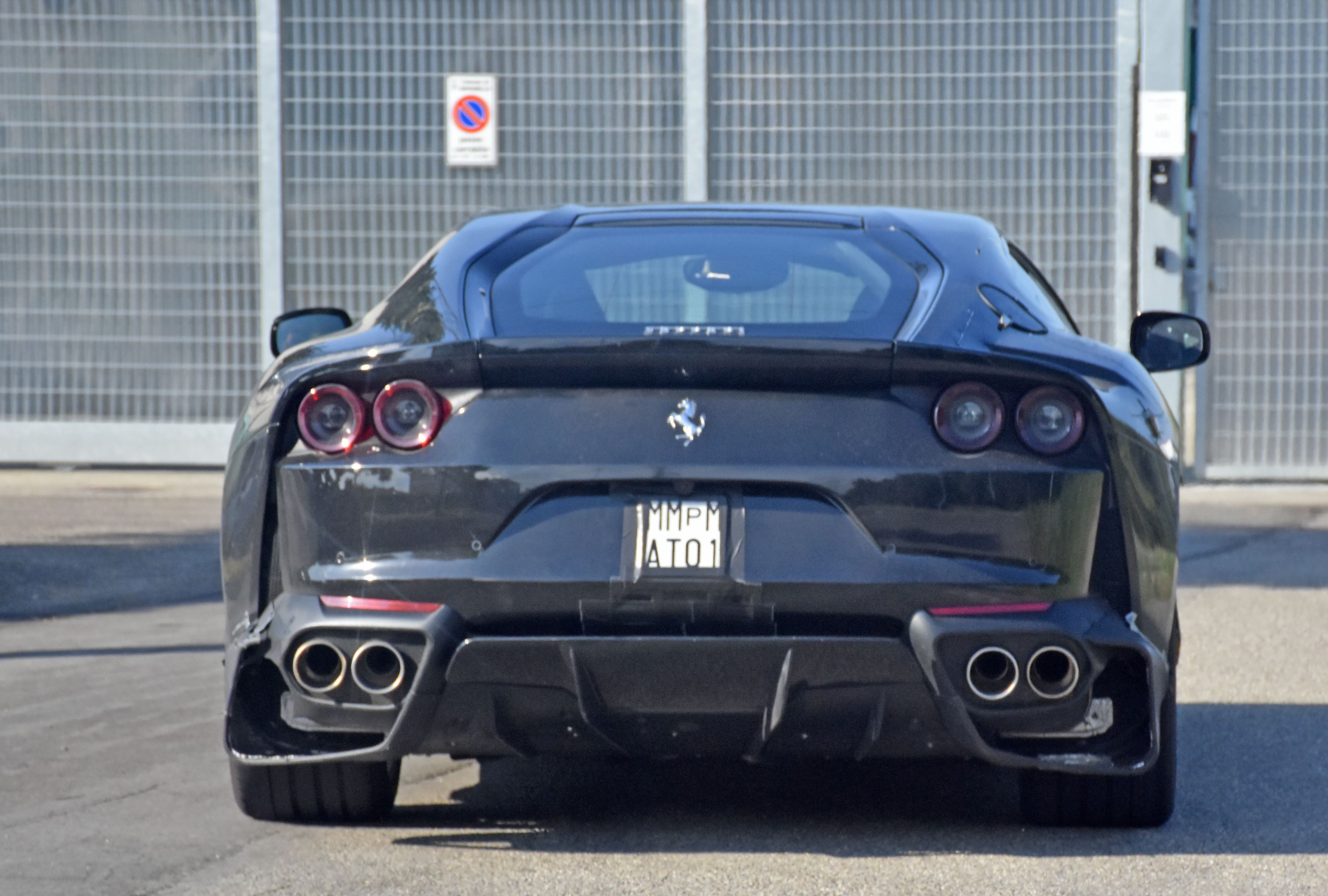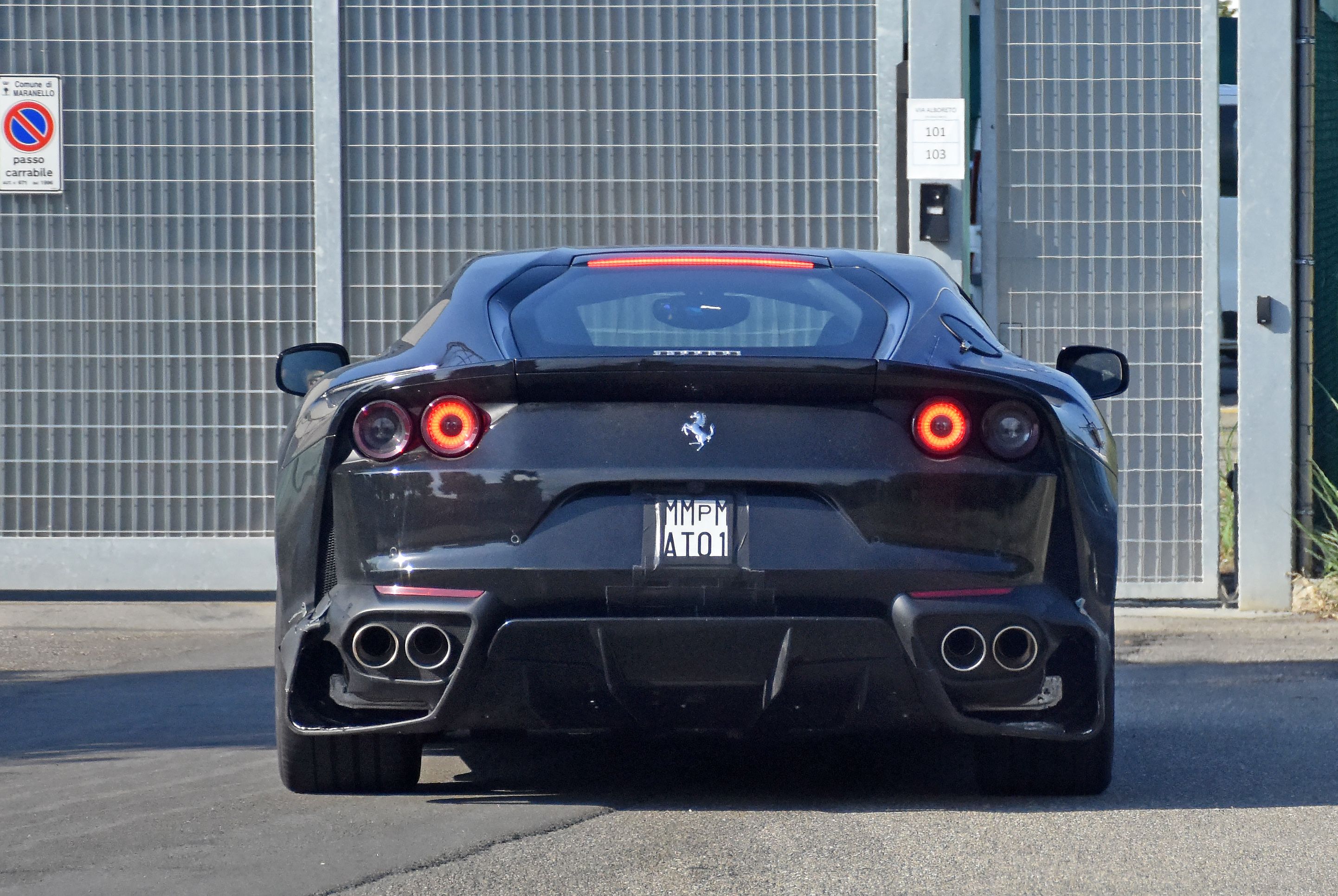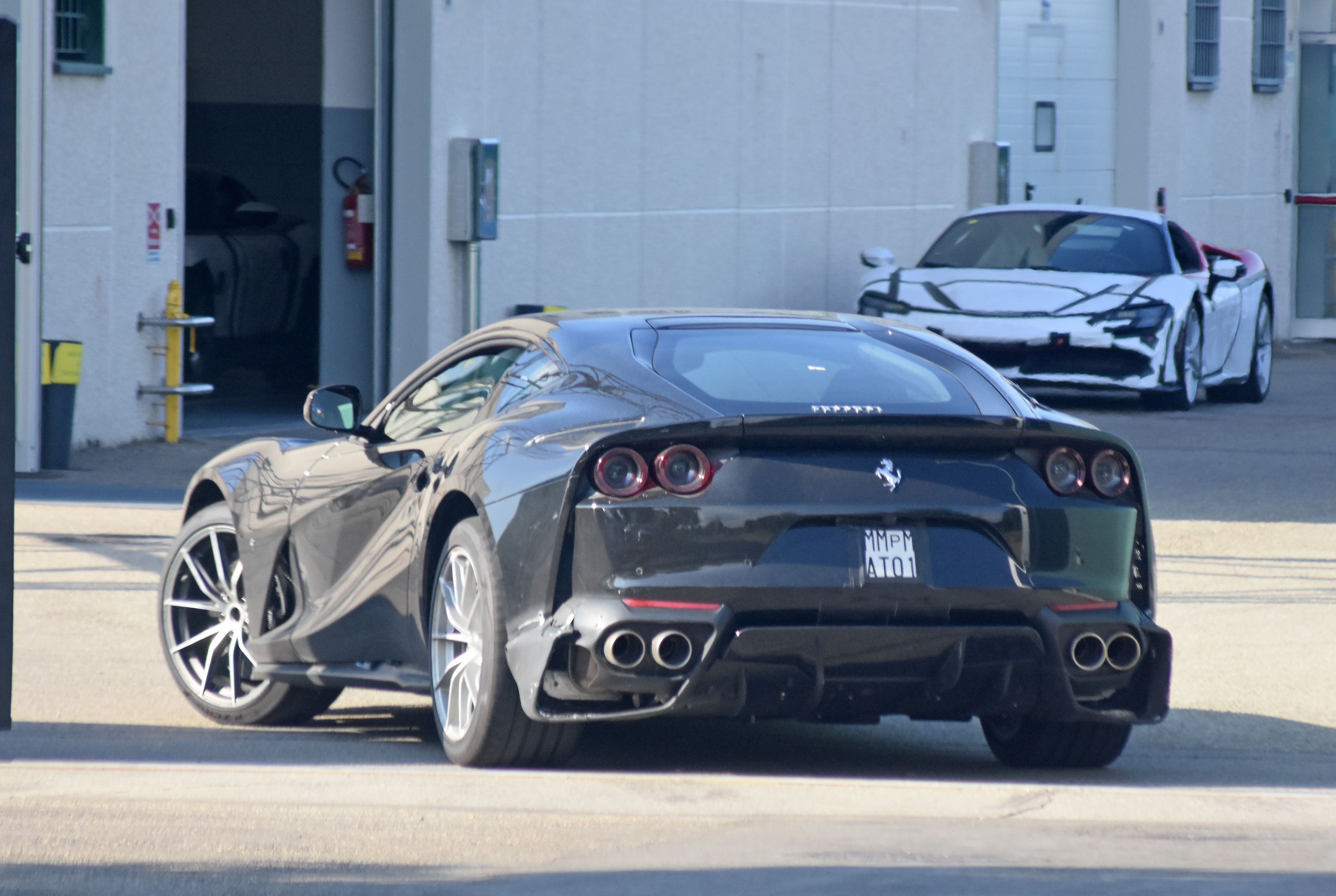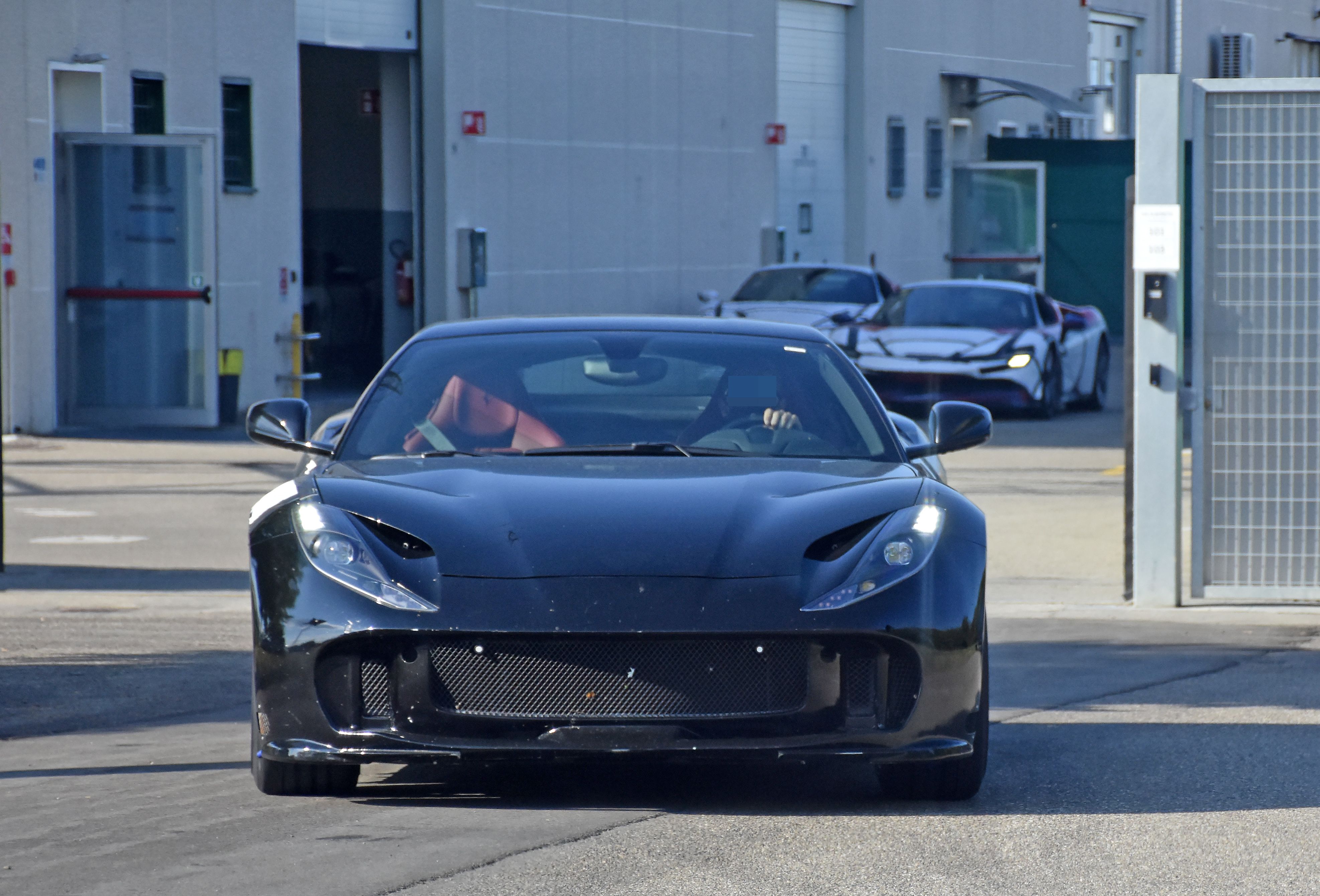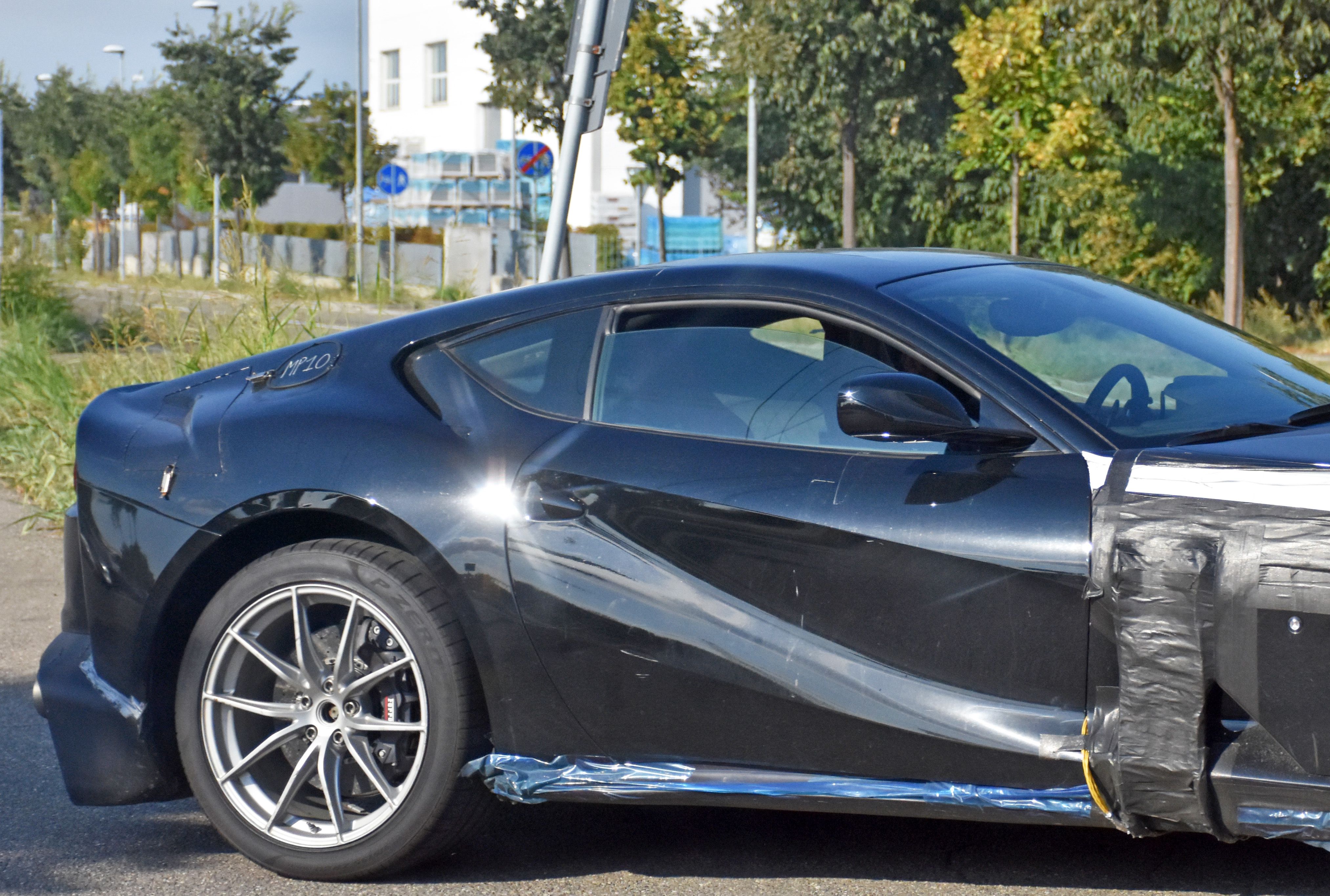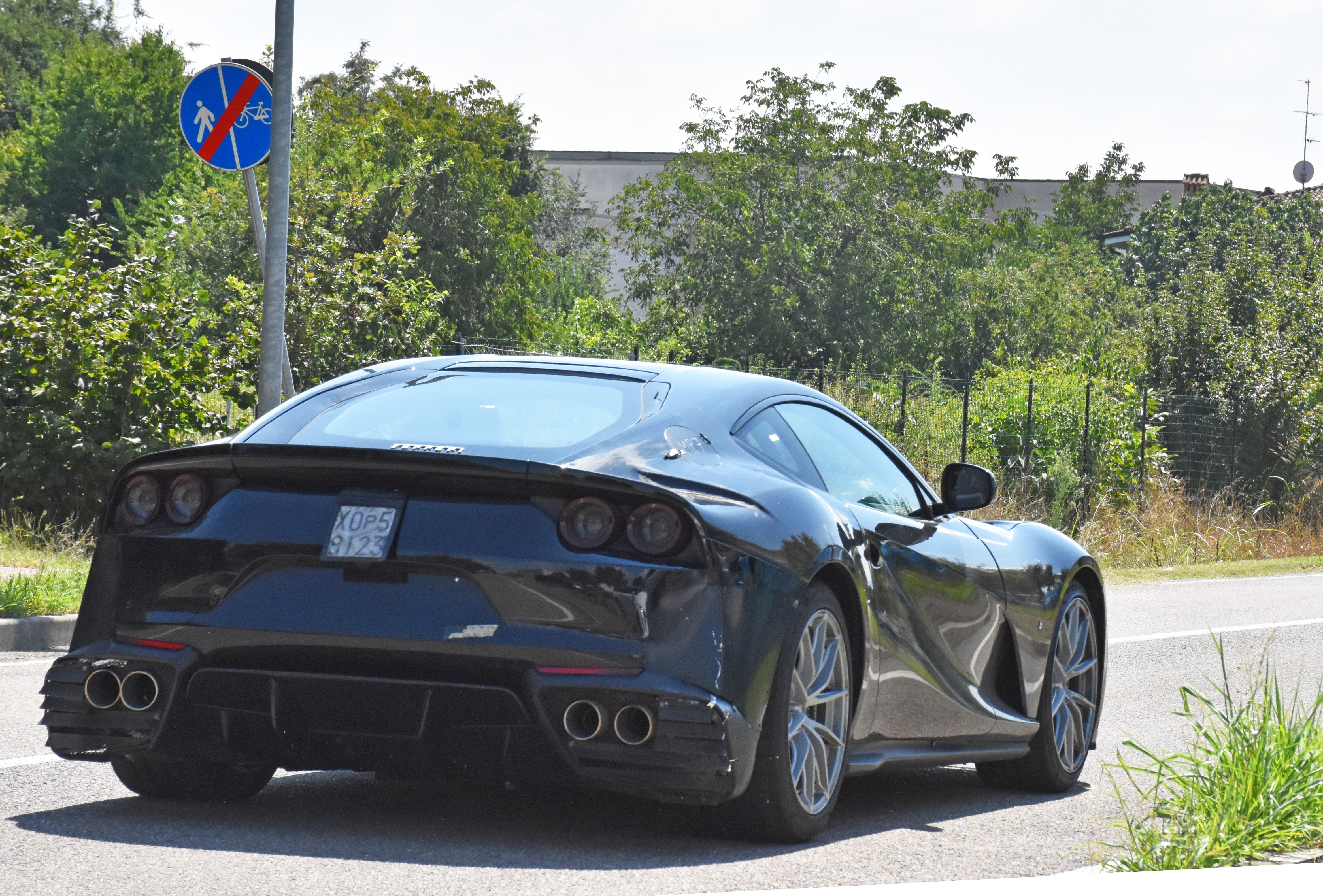The 2021 Ferrari 812 GTO is an upcoming version of the 812 Superfast grand tourer. A return of the "GTO" has been rumored since before Ferrari upgraded the F12berlinetta into the 812 Superfast. Ferrari has yet to confirm that such a model is underway, but our paparazzi spotted a slightly modified and camouflaged 812 on the go. With Ferrari set to unveil two new models by the end of 2020, the 812 GTO could become a reality, and the "GTO" badge would return after exactly ten years.
2021 Ferrari 812 GTO
- Make: Array
- Model: 2021 Ferrari 812 GTO
- [do not use] Vehicle Model: Array
Exterior
The test car looks familiar in the front.
The mule's profile is perfectly identical to the regular 812 Superfast, save for the camo covering most of the right-side front fender. But the cover isn't there to hide a new design feature or aerodynamic device. It's hiding some cables that enter the engine compartment and that are likely liked to a computer at the other end. Ferrari is testing something or simply monitoring how the car reacts to new performance and aero features.
From the rear, this 812 mule looks identical to the standard Superfast, but things are a bit different in the lower bumper corners. The exhaust pipe surrounds are much larger, but for now, they look like rugged plastic bits attached to the car. The central diffuser is also a bit different, featuring two smaller winglets on each side of the big fins. Again, these changes aren't major design-wise, but they could impact aerodynamics in a serious way.
Interior
Drivetrain
We don't know whether Ferrari is increasing displacement for this engine again, but we do know that the 6.5-liter V-12 can generate more power than in the 812 Superfast as is. The latter is already plenty powerful at 789 horsepower and 530 pound-feet of torque, but the special-edition Monza models benefit from an extra ten horses at a grand total of 799 horsepower. This means that if Ferrari wants the GTO to be more powerful on top of being lighter and more aerodynamic, it already has a tried-and-true version of the 6.5-liter V-12.
On the other hand, Maranello can go with a revised version of the engine for more oomph.
It will also be notably more powerful than the previous GTO, the 599 GTO that was produced from 2010 to 2012. Powered by a beefed-up 6.0-liter V-12, the 599 GTO came with 661 horsepower and 457 pound-feet of torque on tap. This means that the 812 GTO could benefit from an extra 150 horsepower and 100 pound-feet of twist.
But will the GTO be quicker than the 812 Superfast? The regular grand tourer needs 2.8 seconds to hit 60 mph, and so do the Monza SP limited-edition models, which are slightly more powerful. But the GTO should be lighter than the 812 Superfast too. The 599 GTO, for instance, was some 220 pounds lighter than the 599 GTB it was based on, so we can expect a similar weight reduction for the 812 GTO.
Read our full story on the Lamborghini Aventador SVJ.
Ferrari GTO history
First first used the "GTO" badge in 1962 on the Ferrari 250 GTO, arguably the most iconic car the Italian brand has ever built. Short for Gran Turismo Omologato, which translates to Grand Touring Homologated, the GTO name was used on a grand tourer that Ferrari built specifically for the FIA's Group 3 Grand Touring Car category. The 250 GTO was built only until 1964 in just 39 units. While some examples were used as road cars, many 250 GTOs spent their early days on the race track, winning important events for the Italian automakers. The GTO debuted to a second overall finish at the 12 Hours of Le Mans and went on to win the over 2.0-liter class of the International Championship for GT Manufacturers from 1962 to 1964. It also went on to win the Tour de France for two consecutive years. The last front-engined car to remain competitive at the top level of sports car racing, the 250 GTO was contested by only a handful of vehicles until the mid-1960s, including the Jaguar E-Type, Aston Martin DB4 GT, and the Shelby Cobra. The 250 GTO was powered by a 3.0-liter V-12 engine rated at almost 300 horsepower.
The GTO name returned for the first in 1984, on the Ferrari 288. A spiritual successor to the 250 GTO, the 288 was related to the 308 GTB and acted as the company's flagship vehicle until the F40 was introduced. But unlike its V-12-powered predecessor, the 288 GTO featured a twin-turbo, 2.9-liter V-8 under the hood. Using technology borrowed from Formula One, the 288 GTO arrived with an impressive 395 horsepower and 366 pound-feet of torque on tap. While the 250 GTO was primarily developed as a race car, the 288 GTO was a full-fledged road car. However, Ferrari built a race-spec Evoluzione model that was intended to race in Group B rallying. The series was canceled before the Evoluzione went into production, and the project was shelved with only six prototypes built. The race-spec GTO was powered by a 650-horsepower V-8, and it eventually inspired the Ferrari F40.
The latest incarnation of the GTO, the 599 GTO, was built from 2010 to 2012. It was based on the 599 GTB, so it marked a return to the original front-engined V-12 layout. For the 599 GTO, Ferrari upgraded the existing 6.0-liter V-12 to 661 horsepower and 457 pound-feet of torque, turning the grand tourer into the quickest Ferrari at the time, surpassing even the mid-engined Ferrari Enzo. The 599 GTO was, in essence, a road-legal version of the 599XX track-day special, and it needed less than 3.3 seconds to hit 60 mph from a standing start. Built in just 599 units, the 599 GTO was discontinued in 2012 as the last Ferrari to feature the iconic "GTO" emblem.
Conclusion
The 812 GTO is pure speculation as of this writing. Ferrari has yet to confirm that such a model is underway, and there are no hints to suggest that the iconic "GTO" badge is indeed coming back. A revival has been in the rumor mill since 2014, but instead of the GTO, we then got the F12tdf as a tribute to Ferrari's success in the Tour de France back in the day. The last GTO model was discontinued in 2012, and some would say that it's too soon for a new revival, but I think it would be the perfect way to send the company's current grand touring platform, which dates back to 2012, into the history books.
FAQ
Q: How much will the 2021 Ferrari 812 GTO cost?
The return of the GTO badge will add a healthy premium to the 812 Superfast. The latter starts from $338,000, while the 812 GTS comes in at $364,000. The GTO will cost more than that and could very well hit $400,000 before options. On the other hand, the 812 GTO won't be as expensive as the Monza SP1 and SP2, which retailed for more than $1.5 million when new.
Q: Will the 2021 Ferrari 812 GTO be a limited-edition model?
Definitely, just like the 599 GTO from 2010, the 812 GTO will be built in limited numbers. The 599 GTO was built in 599 examples, but Ferrari may restrict the 812 GTO to only 500 units.
Q: When will the 2021 Ferrari 812 GTO go on sale?
The 812 GTO will likely break cover by the end of 2020. Production will probably commence in 2021, but the GTO might go on sale as soon as Ferrari unveils the official details. But as is the case with other limited-edition Ferrari, the 812 GTO might be showcased to customers in a private event, and all production models will be accounted for before the car makes its public debut.
Q: Will the 2021 Ferrari 812 GTO be better than the [Lamborghini Aventador SVJ->art176181]?
Being a mid-engined supercar, the Aventador SVJ isn't a perfect match for the 812 GTO, but enthusiasts often compare these nameplates as the flagship V-12 models of the Italian companies. And the "SVJ" or "Jota" badge is Lambo's equivalent for the "GTO," as it first appeared in the 1960s and then resurfaced again in the 1990s on the Diablo and then again in the 2010s on the Aventador. The Aventador SVJ was introduced in 2018 as a more hardcore version of the SV. It features race-inspired aerodynamics, including a big rear wing, and a beefed-up, 6.5-liter V-12 engine that cranks out 759 horsepower and 531 pound-feet of torque. The SVJ is not as powerful as the GTO is predicted to be, but it will be just as quick thanks to its 0-to-60 mph sprint of 2.7 seconds. The Aventador SVJ is limited to only 963 units, including 63 examples of the 63 Edition, and it retails from more than $500,000 in the United States.


